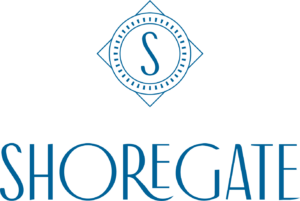
Greater Bay Shore coverage is funded in part by Shoregate, now leasing brand-new premium apartment homes in the heart of Bay Shore. Click here to schedule a tour.
Esteemed artist Kevin McEvoy of Islip will often explain that something went awry in the 1950s and 1960s with respect to how fine art was taught in the U.S.
That’s when the proven method of teaching art for hundreds of years was scrapped.
“For centuries, from the Medieval period forward, there was a master working in the studio and the students learned by being with him, and doing likewise,” McEvoy says. “When the United States university system really came into its own, the studios were shut down. The traditional method of teaching was moved into this sterile environment of a university setting.”
Through his position as president and director of The Atelier at Flowerfield art school, which opened earlier this year in St. James, McEvoy is bringing those old methods back.
“It’s something so old, it’s new,” he says.
McEvoy studied art in both settings.
He earned a bachelor’s degree in fine arts from Stony Brook University and later studied in a traditional atelier setting for two years in Florence, Italy, under a master artist, Charles H. Cecil.
McEvoy, who grew up in Central Islip, is perhaps best known locally for his “Eight Faces of Islip” series that was exhibited at the Islip Library and highlighted by Newsday in January 2014.
A large painting of his, called “Old Whitecap Docks,” also hangs prominently at the Starbucks on Main Street.
Having taught in various capacities over the past several years, McEvoy’s new endeavor comes with the support of a board of trustees, as The Atelier at Flowerfield is seeking nonprofit status. The school also has growth plans that include holding satellite classes at South Shore locations, such as the Bayard Cutting Arboretum in Great River.
One of those founding trustees, Barbara Beltrami of Setauket, a retired English teacher from Commack High School, is also enrolled in classes at The Atelier at Flowerfield.
In 10 years of taking art classes, both either privately or in groups, Beltrami said there’s no comparison to the growth she’s experienced under McEvoy’s European model.
“He’s taken this concept and brought it back here, and there are not many schools that I know of doing this, except maybe in some of the major cities,” she said. “So I’m very happy for [Long Island] to have this atelier, and to be part of it as a founding trustee and a student.”
“I come home and say to my husband, ‘You won’t believe what I learned,’’ she added. “I’ve never experienced anything like it before. I can only describe it as scientific in its approach.”
As an artist and a person, McEvoy always had an aversion to abstract art, or modern art.
As a youth, he would copy Rembrandt drawings from the encyclopedia Britannica, and draw the Greek statues he would find at museums.
Yet his passion for the classics conflicted with the taste of all his art teachers.
“All my professors were modern, postmodern, conceptual to expressionists and they wanted me to be the next Jackson Pollock,” the American painter known for his drip paintings. “To them, representational art was something we weren’t supposed to go back to.”
“But Robert Frost, he was trying to speak to people. Or what Billy Joel does. I can’t understand why art had to break away from the idea of an audience and performer. It really bothers me. It all seems self indulgent and narcissistic.”
“What I love about representational art is it’s the closest thing we have to a universal language,” he said. “I have a number of people I talk to who live in Iran, and they’re fantastic painters. And we know what each other are doing, yet we can’t talk. We just share images.
“It’s that universal language that spoke to me.”
Click here to learn more about Kevin McEvoy and The Atalier at Flowerfield.
Photo: Kevin McEvoy at work with subject Mike Bauer of Islip. (courtesy)
























